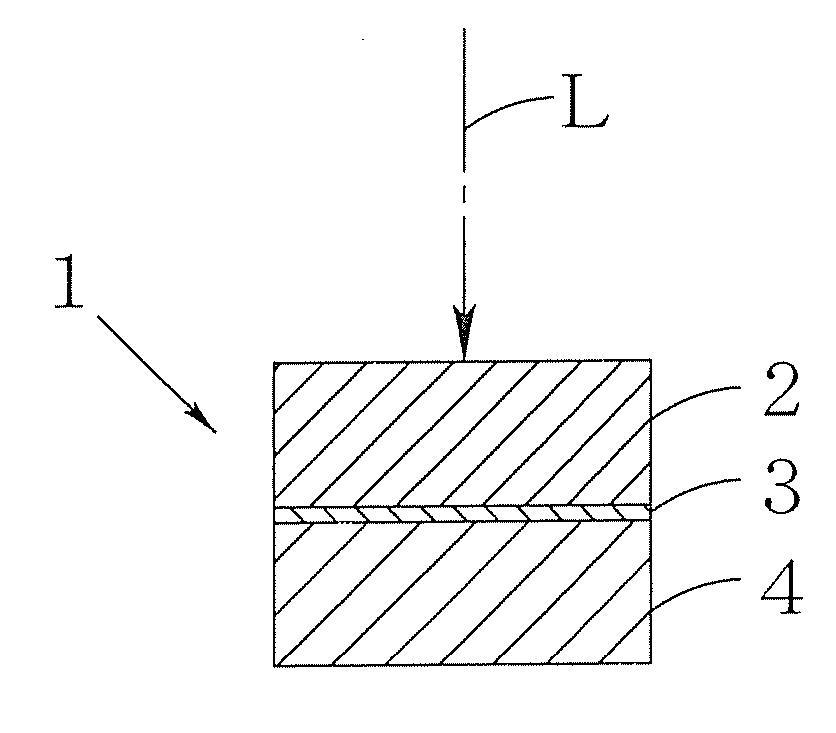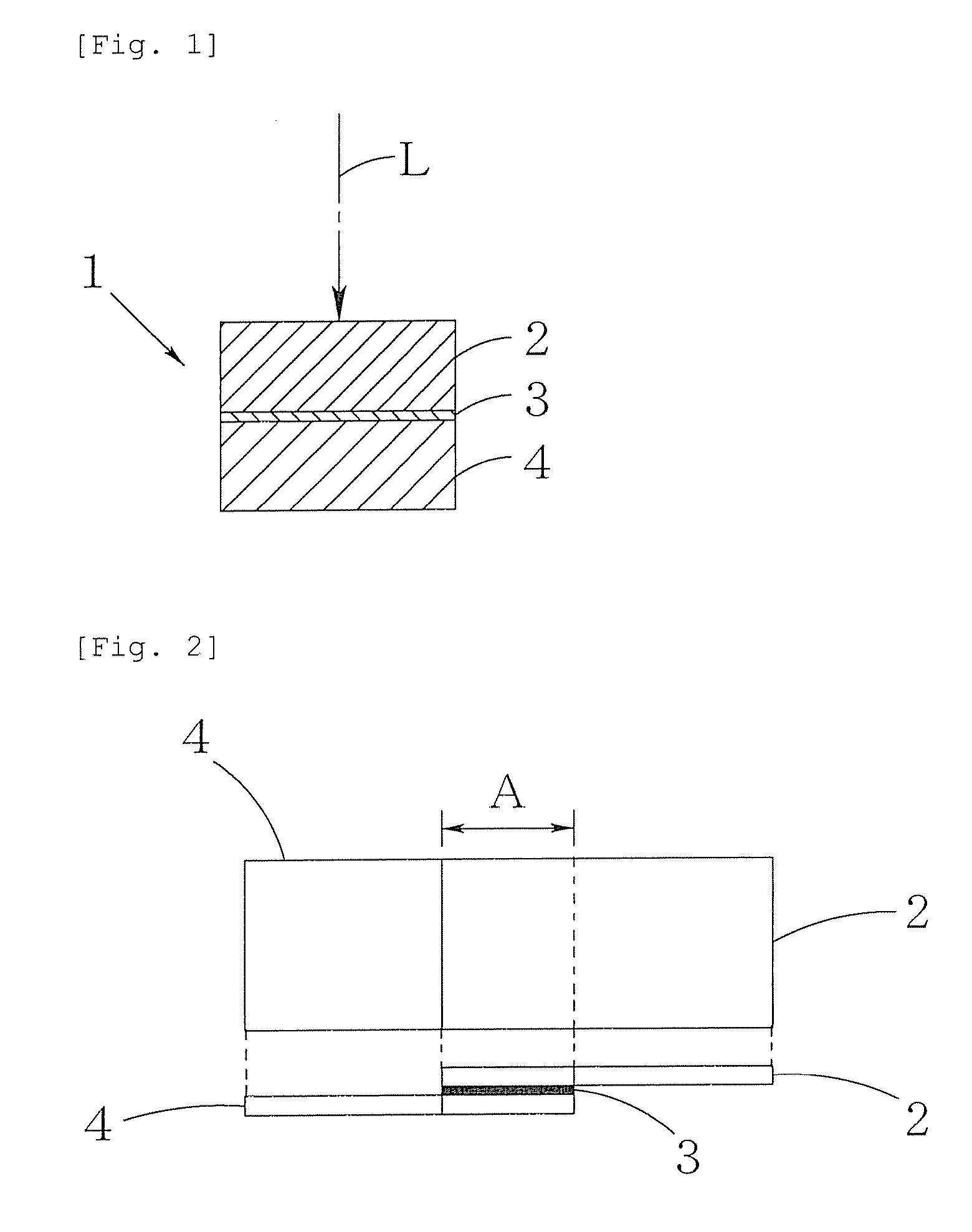Intermediate member for laser bonding and method of bonding using the same
a laser bonding and intermediate member technology, applied in the field of intermediate members, can solve the problems of insufficient strength and reliability, inability to absorb the local volumetric change of resin, and limit the combination of bondable materials, etc., and achieve the effect of simple and easy operation and high bonding strength
- Summary
- Abstract
- Description
- Claims
- Application Information
AI Technical Summary
Benefits of technology
Problems solved by technology
Method used
Image
Examples
example 1
[0069]20 parts by weight of SEBS modified with a monomer having a carboxyl group (styrene content: 32% by weight, molecular weight: 52,000), 20 parts by weight of a terpene resin (“YS Resin TO-115”, manufactured by YASUHAPA CHEMICAL CO., LTD.), 0.05 parts by weight of an infrared absorbent (“IR-T”, manufactured by SHOWA DENKO K.K.) and 60 parts by weight of toluene were weighed, placed in a container, allowed to stand while sealing for 18 hours and then stirred by a screw until a uniform mixture is obtained. The resulting mixture was applied on a release paper using a coater and then dried to obtain a 100 micron thick sheet for laser bonding. The resulting sheet for laser bonding had a tensile elastic modulus of 4.08 MPa.
[0070]A 180 degree peel tack force to a stainless steel (SUS304) plate of the resulting sheet for laser bonding was 18.7 N / 25 mm on average of the convex point, 16.2 N / 25 mm on average of the concave point, and 17.4 N / 25 mm on average of the concave and convex point...
example 2
[0072]In the same manner as in Example 1, except that 20 parts by weight of a hydrogenated terpene resin (“Clearon K-115”, manufactured by YASUHARA CHEMICAL CO., LTD.) was used in place of 20 parts by weight of the terpene resin in Example 1, a 100 micron thick sheet for bonding was obtained. The resulting sheet for bonding had a tensile elastic modulus of 5.97 MPa. A 180 degree peel tack force to a stainless steel (SUS304) plate of the resulting sheet for bonding was 17.5 N / 25 mm on average of the convex point, 16.2 N / 25 mm on average of the concave point, and 16.9 N / 25 mm on average of the concave and convex points. A 180 degree peel tack force to a polypropylene plate was 13.5 N / 25 mm on average of the convex point, 7.3 N / 25 mm on average of the concave point, and 10.4 N / 25 mm on average of the concave and convex points. To sum up, the resulting sheet for bonding has a sufficient tack force to both the metal and resin. Using this sheet for bonding, laser beams were irradiated and...
example 3
[0075]100 parts by weight of an acryl-based block copolymer “LA2140E” manufactured by KURARAY CO., LTD., 0.2 part by weight of carbon black “PRINTEX G” manufactured by Degussa and 150 parts by weight of toluene were weighed, placed in a container, allowed to stand while sealing for 18 hours and then stirred by a screw until a uniform mixture is obtained. The resulting mixture was applied on a release paper using a coater and then dried to obtain a 100 micron thick sheet for bonding. “LA2140E” is a triblock copolymer of methyl methacrylate-n-butyl acrylate-methyl methacrylate. The resulting sheet for bonding had a tensile elastic modulus of 0.5 MPa. A 180 degree peel tack force to a stainless steel (SUS304) plate of the resulting sheet for bonding was 8.7 N / 25 mm on average of the convex point, 5.3 N / 25 mm on average of the concave point, and 7.0 N / 25 mm on average of the concave and convex points.
[0076]A polyoxymethylene (POM) plate was used as both a first member and a second membe...
PUM
| Property | Measurement | Unit |
|---|---|---|
| Temperature | aaaaa | aaaaa |
| Percent by mass | aaaaa | aaaaa |
| Percent by mass | aaaaa | aaaaa |
Abstract
Description
Claims
Application Information
 Login to View More
Login to View More - R&D
- Intellectual Property
- Life Sciences
- Materials
- Tech Scout
- Unparalleled Data Quality
- Higher Quality Content
- 60% Fewer Hallucinations
Browse by: Latest US Patents, China's latest patents, Technical Efficacy Thesaurus, Application Domain, Technology Topic, Popular Technical Reports.
© 2025 PatSnap. All rights reserved.Legal|Privacy policy|Modern Slavery Act Transparency Statement|Sitemap|About US| Contact US: help@patsnap.com



